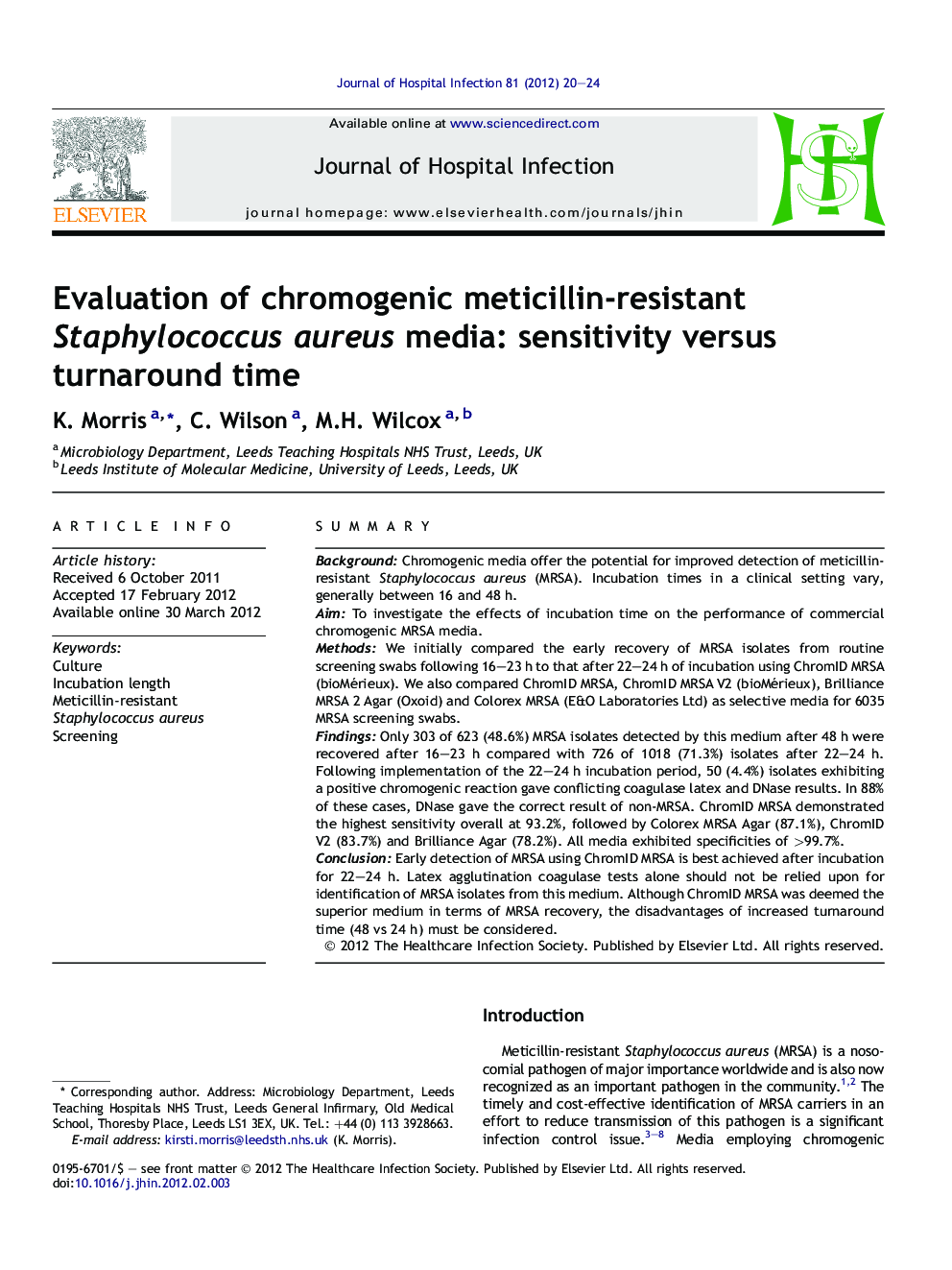| Article ID | Journal | Published Year | Pages | File Type |
|---|---|---|---|---|
| 3371877 | Journal of Hospital Infection | 2012 | 5 Pages |
SummaryBackgroundChromogenic media offer the potential for improved detection of meticillin-resistant Staphylococcus aureus (MRSA). Incubation times in a clinical setting vary, generally between 16 and 48 h.AimTo investigate the effects of incubation time on the performance of commercial chromogenic MRSA media.MethodsWe initially compared the early recovery of MRSA isolates from routine screening swabs following 16–23 h to that after 22–24 h of incubation using ChromID MRSA (bioMérieux). We also compared ChromID MRSA, ChromID MRSA V2 (bioMérieux), Brilliance MRSA 2 Agar (Oxoid) and Colorex MRSA (E&O Laboratories Ltd) as selective media for 6035 MRSA screening swabs.FindingsOnly 303 of 623 (48.6%) MRSA isolates detected by this medium after 48 h were recovered after 16–23 h compared with 726 of 1018 (71.3%) isolates after 22–24 h. Following implementation of the 22–24 h incubation period, 50 (4.4%) isolates exhibiting a positive chromogenic reaction gave conflicting coagulase latex and DNase results. In 88% of these cases, DNase gave the correct result of non-MRSA. ChromID MRSA demonstrated the highest sensitivity overall at 93.2%, followed by Colorex MRSA Agar (87.1%), ChromID V2 (83.7%) and Brilliance Agar (78.2%). All media exhibited specificities of >99.7%.ConclusionEarly detection of MRSA using ChromID MRSA is best achieved after incubation for 22–24 h. Latex agglutination coagulase tests alone should not be relied upon for identification of MRSA isolates from this medium. Although ChromID MRSA was deemed the superior medium in terms of MRSA recovery, the disadvantages of increased turnaround time (48 vs 24 h) must be considered.
